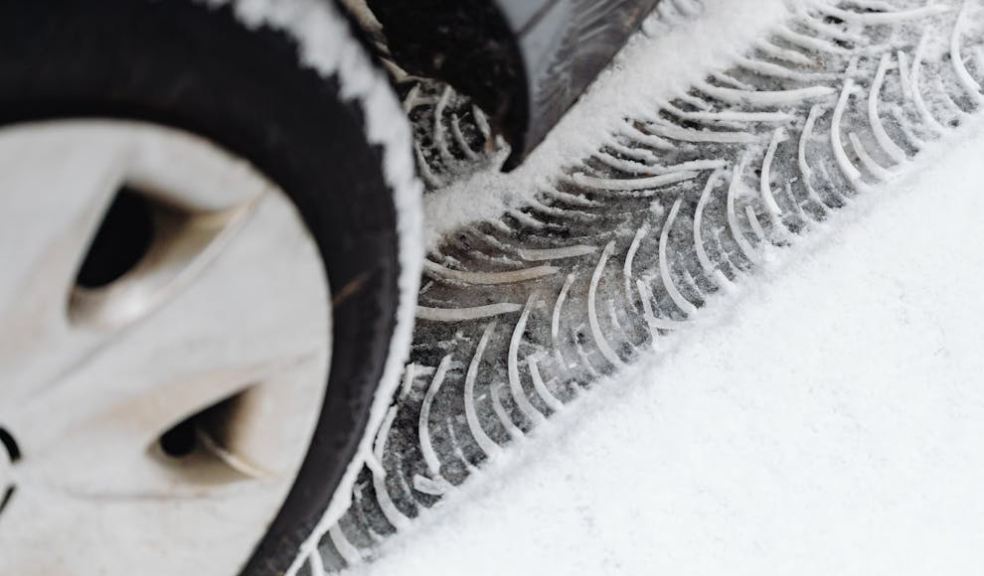
Ice Traction Technologies: How Top Brands Solve the Slippery Road Problem
When winter roads transform into treacherous skating rinks, advanced tire technology becomes the crucial barrier between safety and disaster. Modern ice traction technologies have revolutionized winter driving, with manufacturers developing sophisticated solutions that combine innovative rubber compounds, cutting-edge tread patterns, and specialized features to tackle the most challenging road conditions.
Finding the right winter tires for your vehicle, such as those available at https://www.tyres.net/all-tyres/car/winter-tyres, can make the difference between confident winter driving and dangerous skidding on icy surfaces.
Revolutionary Compound Technologies
The foundation of modern winter tire performance lies in advanced rubber compound formulations that remain flexible in extreme cold conditions. Bridgestone's groundbreaking Tube Multicell technology represents a major breakthrough in ice traction engineering.
This innovative compound contains millions of microscopic bubbles that function like tiny sponges, absorbing the thin layer of water that forms on ice surfaces. As these microscopic pores disperse water, specially designed bite particles make direct contact with the ice, creating enhanced gripping action that dramatically improves traction.
The technology is strategically distributed throughout the first 55% of usable tread depth, ensuring consistent water dispersion and grip performance as the tire wears.
Michelin has developed their own revolutionary approach with the FLEX-ICE 2.0 tread compound, which utilizes inclusion technology to generate micro-roughness on the tread surface. This specialized compound maintains high silica content to ensure tire flexibility even in severe climate conditions, while the micro-roughness creates additional contact points for improved grip on both snow and ice.
The company's EverGrip technology incorporates rigid polymers throughout the compound, providing sustained grip performance that lasts for the entire duration of the tire's wear life.
Continental has focused on developing compounds that optimize the balance between ice performance and energy efficiency. Their latest winter tire compounds feature specialized formulations that maintain flexibility at extremely low temperatures while incorporating technologies that reduce rolling resistance for improved fuel economy and electric vehicle range. T
he company's research has produced compounds that excel specifically in ice conditions, earning the new Ice Grip symbol certification for superior braking performance on icy surfaces.
Advanced Tread Pattern Engineering
Modern winter tire tread patterns represent sophisticated engineering solutions designed to maximize contact with slippery surfaces while efficiently managing snow and water displacement. The arrangement of tread blocks, grooves, and sipes creates multiple mechanisms for enhanced winter traction.
Deep circumferential grooves effectively channel away water and slush, preventing aquaplaning while ensuring better road contact. These grooves are specifically designed wider and deeper in winter tires compared to all-season alternatives, allowing them to absorb more slush and maintain superior contact with the road surface.
Tread block design has evolved to maximize the surface area in contact with ice and packed snow, with wider blocks providing enhanced grip through increased contact patches. The strategic positioning and angles of these blocks create numerous biting edges that dig into snow and ice surfaces for improved traction. Modern designs also incorporate flexible block arrangements that adapt to surface irregularities, maintaining consistent contact even on uneven winter road conditions.
Michelin's V-shaped tread design exemplifies next-generation pattern engineering, utilizing 100% of the contact patch for optimal grip performance on both snow and ice.
This distinctive pattern maintains its effectiveness even as the tire wears, continuing to provide reliable winter performance throughout the tire's lifespan. The design also delivers exceptional slush performance, effectively managing the challenging conditions created by melting snow and ice.
Studded Tire Innovations
Studded tire technology has experienced remarkable advancement, moving far beyond simple metal studs embedded in rubber. Nokian Tyres has pioneered revolutionary Double Stud Technology that optimizes stud positioning for maximum safety on snow and ice.
This system uses different stud configurations strategically placed throughout the tire, with center studs specifically designed to provide improved braking grip and acceleration performance. The shoulder studs are positioned and oriented to enhance cornering stability and overall handling characteristics.
The Finnish manufacturer has also developed the groundbreaking Eco Stud 10 concept, which ensures studs remain securely in place throughout the tire's life while minimizing road surface wear. This technology incorporates air damping systems that reduce the environmental impact of studded tires by limiting particulate matter generation.
The advanced stud placement and orientation system provides excellent grip while maintaining exceptional driving comfort, dispelling the traditional perception of studded tires as harsh and noisy.
Perhaps most remarkably, Nokian has created the world's first concept tire featuring retractable studs that can be deployed or retracted at the driver's command. This revolutionary technology allows drivers to activate studs only when conditions require them, providing the flexibility to switch between studded and non-studded performance as road conditions change. The system utilizes a moveable hard metal pin within each stud body, controlled electronically to raise or lower all studs simultaneously.
Brand-Specific Technology Leadership
Leading tire manufacturers have developed distinctive technological approaches that set their products apart in the competitive winter tire market. Bridgestone's latest ENLITEN Technology represents a next-generation approach that revolutionizes tire engineering processes.
This comprehensive technology platform delivers customized and uncompromised tire performance while enhancing sustainability and advancing EV-readiness across their product portfolio. The Bridgestone Blizzak 6, engineered with ENLITEN Technology, has achieved recognition as an overall winner in rigorous testing, demonstrating 32% better mileage than its predecessor while maintaining superior winter performance.
Goodyear has focused on developing technologies that excel across multiple winter conditions, not just on snow and ice. Their UltraGrip Performance series incorporates innovative shoulder grooves that improve grip on various snow conditions, from soft powder to deep accumulation. The company's optimized siping arrangements provide enhanced braking and handling performance in snow while maintaining excellent wet road capabilities. This versatility makes Goodyear's technology particularly valuable for drivers who encounter varied winter conditions throughout the season.
Cooper Tires has developed specialized tread designs specifically adapted to winter conditions, focusing on robust and reliable solutions for demanding ice and snow environments.
Their approach emphasizes balanced performance across traction, durability, and safety, making their technology accessible to drivers seeking reliable winter performance without premium pricing. The company's winter tire designs prioritize consistent performance in city driving conditions while maintaining capability for more challenging winter adventures.
Ice Grip Symbol Certification
The introduction of the Ice Grip symbol represents a significant advancement in winter tire standardization and consumer guidance. This international symbol, developed by the International Organization for Standardization (ISO), specifically identifies tires designed to deliver superior braking performance on ice.
To earn this certification, tires must pass rigorous traction tests on icy surfaces at accredited independent laboratories, performing at least 18% better than standard reference tires. This represents a substantial performance improvement that directly translates to enhanced safety for drivers facing icy conditions.
The Ice Grip symbol fills a crucial gap in winter tire identification, as the traditional Three-Peak Mountain Snowflake (3PMS) symbol only addresses snow performance, not ice traction. This new certification provides consumers with clear guidance when selecting tires for areas where icy conditions are prevalent.
Early adopters of the Ice Grip symbol include advanced winter tire models from manufacturers like Nokian, whose Hakkapeliitta series has been designed specifically to meet these stringent ice performance requirements.
The certification process ensures that tires bearing the Ice Grip symbol have undergone comprehensive testing to validate their ice performance claims. This standardization helps consumers make informed decisions based on verified performance data rather than marketing claims alone.
As more manufacturers develop tires to meet Ice Grip standards, drivers in ice-prone regions will have access to increasingly effective solutions for the most challenging winter driving conditions.
Future Directions in Ice Traction Technology
Winter tire technology continues evolving rapidly, driven by changing vehicle technologies, environmental concerns, and increasingly demanding performance expectations. The rise of electric vehicles has prompted tire manufacturers to develop winter solutions that maintain excellent ice traction while optimizing energy efficiency for extended range.
This challenge requires innovative approaches that balance the traditional soft compounds needed for winter grip with low rolling resistance characteristics essential for EV performance.
Manufacturers are increasingly focusing on developing all-weather technologies that can provide year-round performance while maintaining strong winter capabilities. This trend reflects consumer desires for convenience and cost-effectiveness, pushing engineers to create compounds and tread patterns that excel in both summer and winter conditions without compromising safety.
Advanced polymer technologies and sophisticated tread designs are making these multi-season solutions increasingly viable for moderate winter climates.
Environmental sustainability has become a driving factor in winter tire development, with manufacturers pursuing technologies that reduce environmental impact while maintaining performance. Innovations like Nokian's air damping stud technology demonstrate how traditional winter tire solutions can be refined to minimize road wear and particulate generation.
Future developments may include biodegradable compounds, recycled materials integration, and manufacturing processes that reduce the environmental footprint of winter tire production while maintaining the critical safety performance that drivers depend on during hazardous winter conditions.











